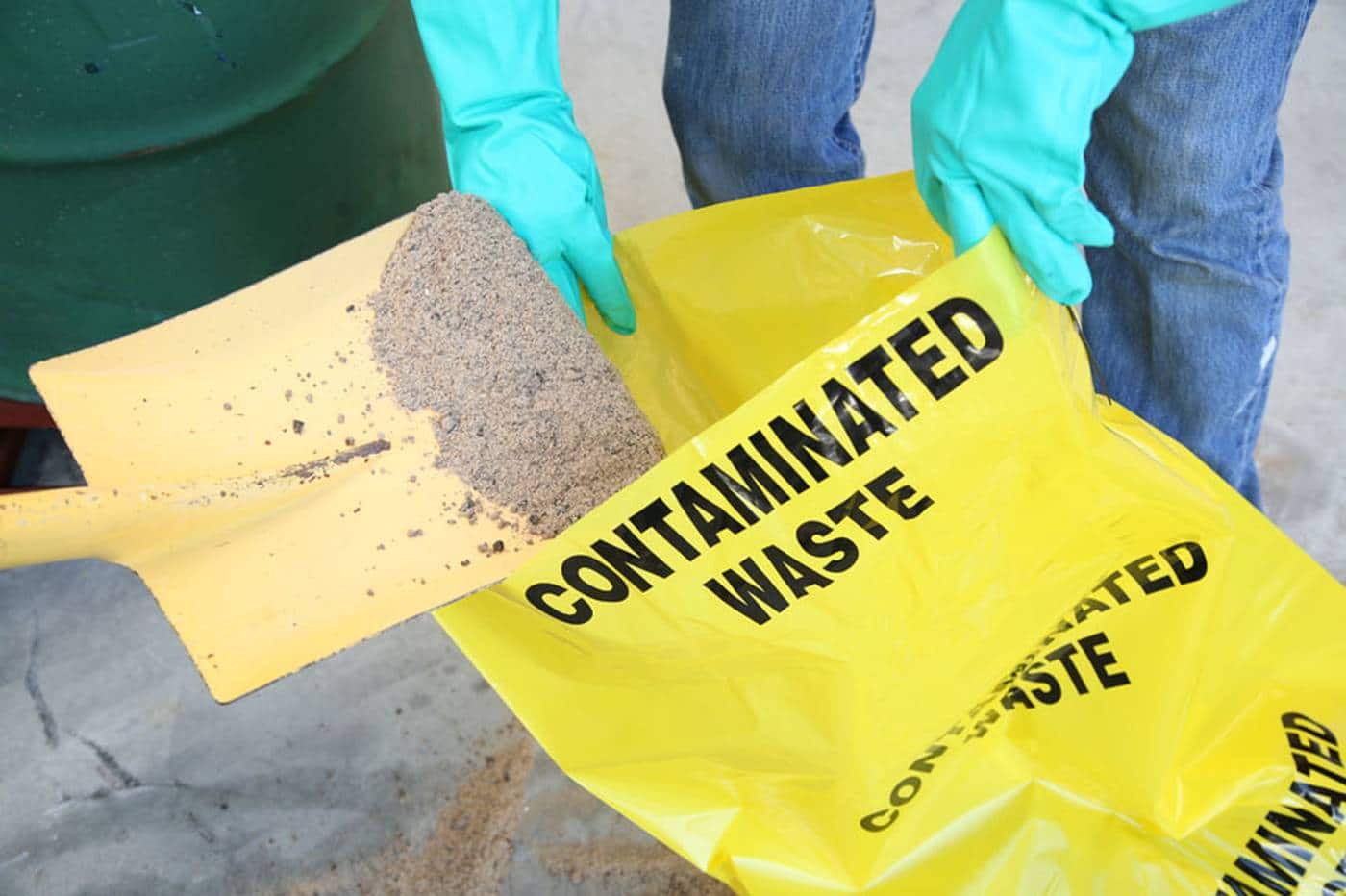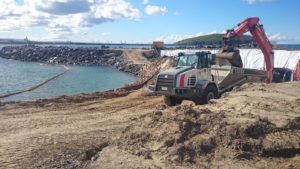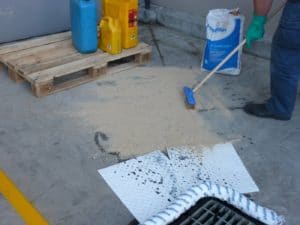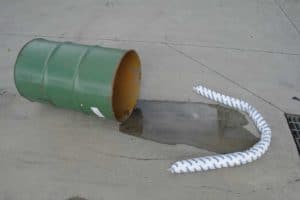How Do You Dispose of Workplace Spills and Contaminated Waste?
A very important facet of your waste disposal policy should include the classification of waste. DECC (Department of Environment, Climate Change and Water) or as it is now called Office of Environment and Heritage, sets out the rules for waste classification guidelines through various documents
(most of which can be found online).
For now, I will focus on spilled oil or hydrocarbons, and the resultant waste once the spill has been cleaned up. The method of disposal of used absorbant product is based on whether the resulting waste produced from the spill clean-up meets the requirements of General Immobilisation Approval 99/06.
The GIA requires two main things:
1. “Oil absorbent materials for cleaning up spilt Total Petroleum Hydrocarbons C10 – C36 are capable of securely containing more than 100% of their own mass of such hydrocarbons.”
2. “Total Petroleum Hydrocarbons C10 – C36 that are contained within the used oil absorbent materials are immobilised and will not be released as free liquids during handling, transportation and disposal.”
Waste, is not simply waste. The disposal of the different classifications of waste vary according to state laws, local regulations and the environmental authority guidelines. There are, by the Office of Environment & Heritage guidelines, 6 waste classes in use. These are Special waste, liquid waste, hazardous waste, restricted solid waste, general solid waste (putrescible) and general solid waste (non-putrescible).
Let’s take a look at floor sweeps. There are several suppliers of floor sweep and spill control equipment in the market today. If the product you are using does not fully encapsulate 100% of its own volume in hydrocarbon, you cannot simply keep on applying more and more absorbent in order to not have any free liquid present in the waste. This is to prevent our landfills from filling up with excessive amounts of sand, dirt or “kitty litter” (as they are filling up too quickly as it is). Thus, this criteria automatically excludes all adsorbents such as the inorganic ‘kitty litter’ products (zeolite, various clays, amorphous silica, DE), sand, dirt and even chunky sawdusts
Different floor sweeps will vary in their characteristics – what they are made from and how they do what they do. Some may say ‘kitty litter’ or sawdust. Others will be a mixture of ingredients and will be a true floor sweep with greater absorption characteristics and bio-degradability. All these products have a place in a holistic view of spill control and waste disposal, but each may also have different rules for its disposal after use.
Firstly, you need to decide if your waste product, now comprising the spilled oil soaked up inside the floor sweep, is fully encapsulated within the floor sweep (or whatever you used to absorb it). This full encapsulation means that the oil will not ‘leak’ or leach back out of the product. Its disposal can be based on whether the resulting waste produced from the spill clean-up meets the requirements of General Immobilisation Approval 99/06.
If it does, then the waste can be discarded as General Solid waste (non-putrescible). If it does not meet GIA 99/06, then the waste must be disposed as Hazardous Waste.
So, I hear you ask, how do you know what product to use that will fully encapsulate the liquid waste and enable easier disposal of your spilled oil waste?
I’m glad you asked. There is a test called the ‘Paint Filter Liquids Test’ that is commonly referred to in the spill control industry. This is a USA test method, and it is used to determine the presence of free liquids in a representative sample of waste. It is referred to by many suppliers of floor sweep to show the high quality of their product. It was also used as a basic test method to enable classification of waste as liquids free. I say ‘was… because in 2009 NSW EPA moved away from this as a test requirement and created Australia’s own testing measures for waste classification and disposal.
If you see a floor sweep company bragging about its compliance with the Paint Filter’s Test, whilst not a negative claim, you should bear in mind that Office of Environment & Heritage have changed the classification rules and the disposal rules for waste. This test is no longer applied in NSW (at least) and it is worth your time to investigate specific instances for waste classification (and disposal). Talk to your local council, state
government or a certified waste disposal company for more information on specific waste classifications and disposal.







